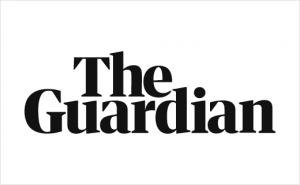
(This post originally appeared on The Guardian)
The Republican-controlled Senate released its proposal for further aiding small businesses during this unprecedented downturn caused by the coronavirus pandemic. Of course, the seven-page detailed outline released by Senator Marco Rubio’s office will probably be different in the bill’s final form. But let’s hope not too different. That’s because it offers up at least three big things that will significantly help many struggling small businesses. Here they are:
Loans under $2m would basically be forgiven, with some caveats
If your business received a PPP loan for less than $150,000 you would no longer be required to go through the forgiveness process. You would have to represent that you made a “good faith” effort to comply with the loan requirements and you would be required to retain the relevant records needed for at least three years, as well as being asked to complete and submit certain demographic information. If your business received a loan for less than $2m you would still have to complete the application along with maintaining records for three years and submitting demographic information. But you won’t be required to submit the documentation. The government will retain its right to audit you.
For countless small businesses that means a significant amount of effort (and professional fees) saved filling out applications. For small business owners like me – many of us who would have been eligible for full forgiveness – this would mean spending much less time doing bureaucratic administrative work and more time that we can devote to running our businesses.
More expenses would be eligible for forgiveness
Just because the loans, in my estimation, are “basically” forgiven that doesn’t mean that you’re still not responsible for certifying that you’ve met the forgiveness requirements and are keeping the necessary documentation just in case you’re reviewed. Even so, the forgiveness rules have been made easier because, although it’s still required that 60% of the costs eligible for forgiveness are payroll-related, more non-payroll expenses are considered eligible to be included in the other 40%.
In addition to rents, mortgage interest and utilities, these eligible expenses now include payment for any software, cloud computing, and other human resources and accounting needs, costs related to property damage due to public disturbances that occurred during 2020 that are not covered by insurance, expenditures to a supplier pursuant to a contract for goods in effect before 15 February 2020 that are essential to the recipient’s current operations and the cost of personal protective equipment and adaptive investments to help you comply with federal health and safety guidelines related to Covid-19 during the period between 1 March and 31 December this year.
All of this expands the definition of forgivable expenses and I would be hard pressed to find a small business that, given these new rules, wouldn’t be eligible for full forgiveness.
There will be more PPP loans available
The government would put aside another $190bn for this round of PPP loans and even if you received one before you may still be eligible to receive a second loan. However, you would have to meet new requirements. For starters, your business would only be allowed to have fewer than 300 employees (not 500 as was previously required). More importantly, you would also have to demonstrate that your gross receipts in the first or second quarter of 2020 was at least 50% less than the same quarters in 2019. Publicly held companies, some financial services firms and Chinese-affiliated companies would be excluded and total loans, including the first round of PPP, would be capped at $10m.
Some industry groups are arguing that the 50% revenue decline benchmark is too high. But for many business owners – particularly in the restaurant and retail industries – meeting that requirement would (unfortunately) not be a problem.
There are a few other goodies too. For example, small businesses who believe they are eligible for higher loans than what was initially approved would be allowed to work with their lenders to alter their original loan value regardless of whether the loan had been fully disbursed. Requirements for smaller lenders and farm credit system institutions have been eased. Chambers of commerce, lobbying and other quasi-government organizations may now be eligible for funds and the rules for seasonal and businesses in low income areas have been clarified and, in some cases, relaxed.
The PPP program has never, and never will be, perfect. Not everyone will be satisfied. But since the very beginning of the pandemic, Congress has taken significant actions to provide aid to the many struggling small businesses across the country and these latest changes are a continuation of those efforts. Yes, I’m concerned about the impact these multitrillion-dollar stimulus programs will have on our future fiscal growth. But for now, these actions are critical to sustain the small businesses that are the backbone of this country’s economy.

